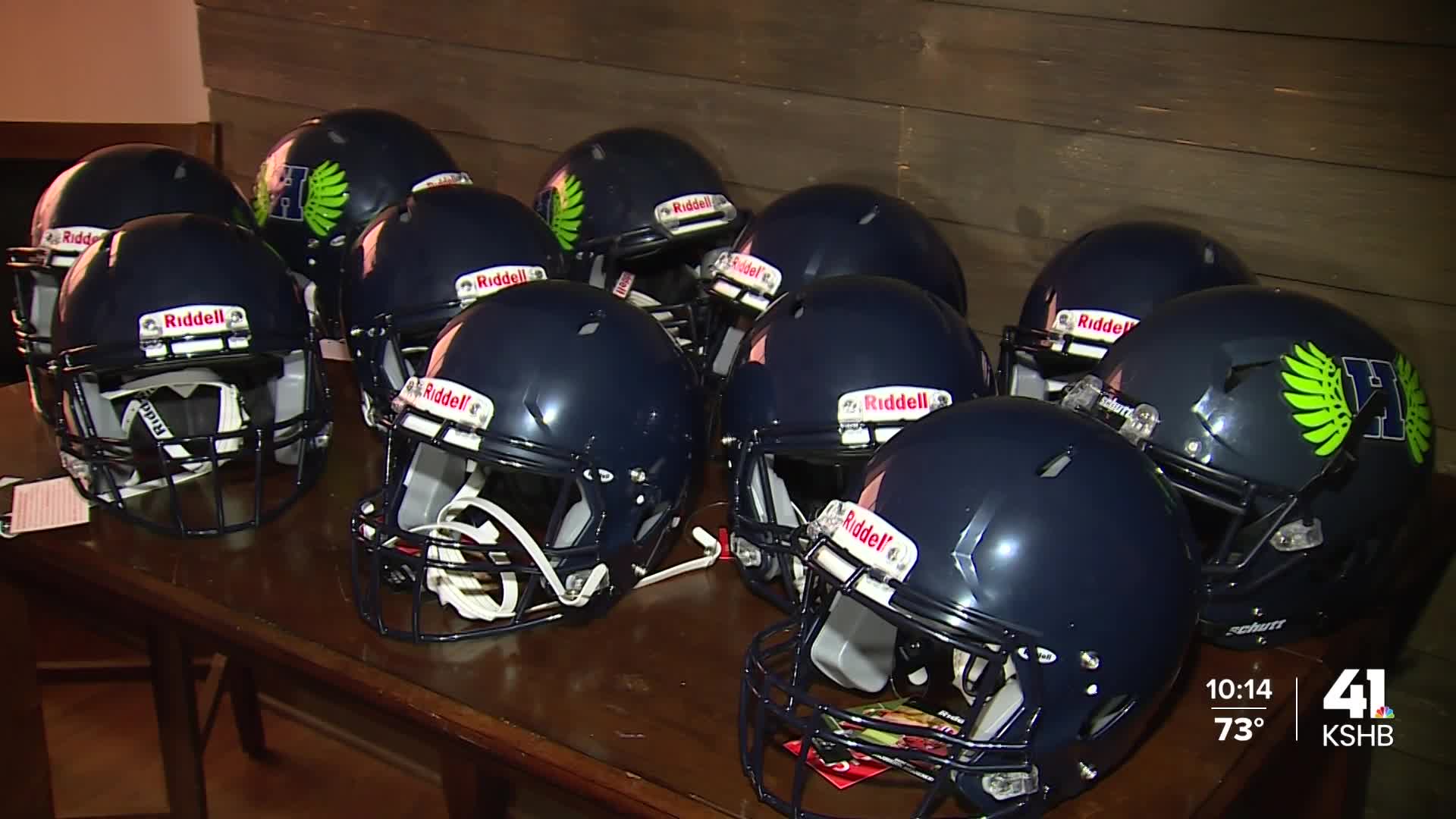INDEPENDENCE, Mo. — Now that NOCSAE has data to support the difference in head and neck injury risks for youth versus adult tackle football players, the Overland Park-based athletic equipment safety standard nonprofit has released a first-ever youth football helmet standard.
“An awful lot went into the standard,” Dr. Robert Cantu, NOCSAE vice president and chair of the organization’s scientific advisory committee, said. “It is something that's evolved over the last 10 years. ... Youth are not small adults. They have particular needs. They have disproportionately large heads at an early age, and they have very weak necks.”
That was the starting point for NOCSAE, the National Operating Committee on Standards for Athletic Equipment, to invest half a million dollars into research “to actually go out and test on the field during practices and during games, exactly what these kids were experiencing,” Executive Director Emeritus Michael Oliver said. “... Out of that came some data that was actually fairly surprising. One of which is the younger age group actually has higher head accelerations than the older age group, but it's because they hit the ground more often out of control.”
Armed with that information, NOCSAE developed a new standard for tackle football players who’ve yet to reach high school that will require manufacturers, including Riddell and Schutt, to design a helmet that weighs less. It also reduces the allowable rotational acceleration, the force most closely associated with concussion risks in tackle football.
“Forty, 50 years ago, the big problem was mostly skull fractures and intracranial bleeds, more serious injuries,” Cantu said. “Those have been eliminated virtually by the current helmet standards. What hasn't been as well addressed — and can never be perfectly addressed, but it can be made better — are helmets that better attenuate the forces for concussion. That's where we think this lighter helmet with adequate energy attenuating equipment in it will do a much better job than the current adult standard.”
New helmets will weigh no more than 3.5 pounds. There is no weight limit in the current performance specifications for helmet manufacturers.
“We have 5-year-olds and 6-year-olds, and they tend to, it's like bobblehead football, a little bit,” said Keith Fogliani, who serves as president of the Independence Hawks Pop Warner football and cheer squad and as commissioner for the Heart of America Pop Warner Association.
“That bobble-head doll effect means that a youngster taking a blow, it can be a much lesser blow, but it produces great accelerations to the head,” Cantu said. “Youngsters with that weak neck can't support the weight of an adult helmet, so this helmet will be a lighter one.”
The hope is that it will better mitigate the risks unique to youth football players.
“Knowing that you have a helmet that's kind of tailored, or a standard that’s tailored, to that age, to me, is comforting,” Oliver said. “If I'm a parent, I know my kid's not trying to figure out how to use an adult helmet to play a game for kids, and I think that's probably the most important part of it. It's tailored for the risks and exposures for kids at that age.”
Youth football helmets are considered usable for 10 years, but NOCSAE standards require them to be inspected and reconditioned every two years.
“They're (a new helmet) about $140, then you're paying about $40 to $50 every two years (for reconditioning),” Fogliani said. “You end up with about a $400 helmet when it's all said and done.”
NOCSAE’s new youth football helmet standard goes into effect Sept. 1, 2027, which gives manufacturers time to develop equipment to meet the standard, but current helmets can still be used under the existing guideline, according to Oliver.
National organizations, like Pop Warner or USA Football, could create their own rule requiring the adoption of the new helmets sooner, but that seems unlikely and wouldn't impact NOCSAE's effective date.
However, NOCSAE’s new standard only sets a deadline for future manufacturing as helmet technology continues to evolve — from leather helmets, to foam-lined plastic helmets, to new models with air bladders.
“The technology of the helmets is just going to keep getting better and better,” Fogliani said. “I’m just kind of curious to see what a three-and-a-half-pound helmet's going to be looking like.”
NOCSAE said it doesn't take any position on youth tackle football, but "as long as youth play tackle football, NOCSAE is committed to providing the best protection possible," the organizations said via email.
—
KSHB 41 reporter Tod Palmer covers sports business and eastern Jackson County. Share your story idea with Tod.
[Editor's note: The original story including the wrong effective date for new youth football helmet standard. During a convention in July 2025 in Kansas City, the Sept. 1, 2027, adoption date was formally approved.]





